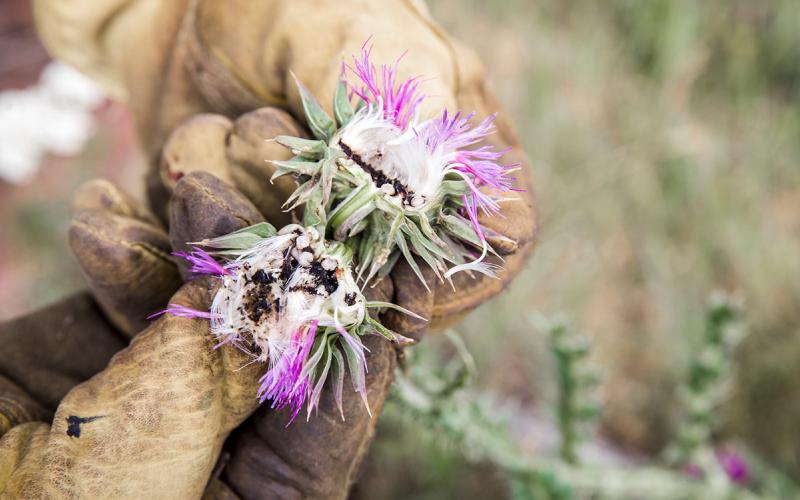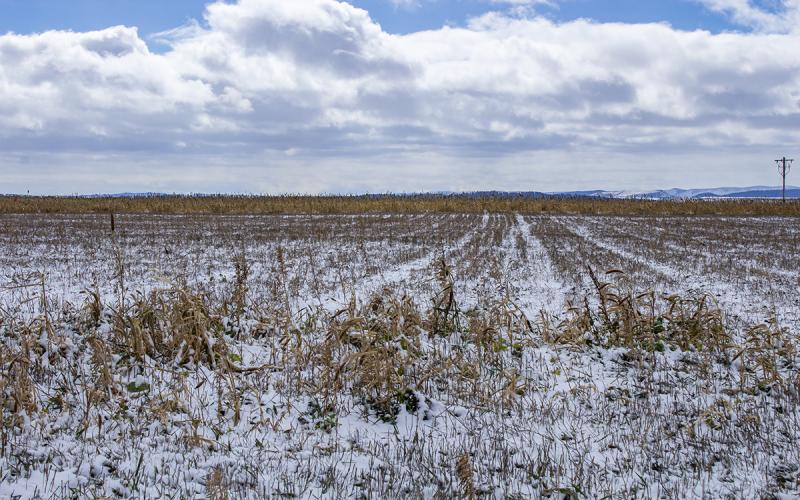Written collaboratively by Eric Jones, Philip Rozeboom, Jill Alms, and David Vos.
Kochia management in South Dakota row crops has always been a challenge. Historically, ALS-inhibiting herbicides (i.e., thifensulfuron [Harmony] and imazethapyr [Purusit]) and glyphosate (Roundup, others) were effective on kochia, but overreliance eventually selected for widespread resistance. Dicamba is an effective herbicide to manage kochia in corn, sorghum, and small grains. Dicamba-resistant kochia was first confirmed in Montana wheat in 1994 and was also confirmed in North Dakota wheat in 1995 (Heap 2025). Recently, dicamba has been regarded as effective on kochia across South Dakota.
Regional Herbicide Screens
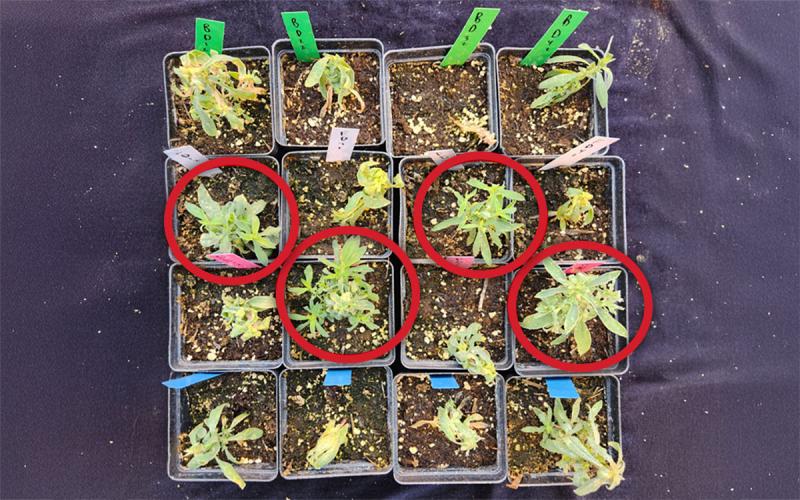
Kochia populations collected across South Dakota have been subjected to an herbicide effectiveness screen where one treatment of dicamba (Banvel, Clarity, others) was applied at 8 fl. oz. per acre. Some kochia plants from these populations exhibited survival and regrowth 28 days after treatment (Figure 1). While 8 fl. oz. of dicamba per acre is a lower rate that can applied to some crops, this rate has historically been lethal to kochia plants that are approximately 3” in height at the time of application. These plants may have survived a greater rate (i.e., 16 fl. oz. per acre) of dicamba as well; therefore, simply increasing the rate may not have been effective.
More research is needed to fully characterize these populations to determine the level of resistance to dicamba and other herbicides. However, the control failures with dicamba should be taken extremely seriously. Kochia from this herbicide screens have survived imazamox (Beyond, Raptor [5 fl. oz. per acre]), glyphosate (Roundup PowerMax 3 [30 fl. oz. per acre]), and saflufenacil (Sharpen [1 fl. oz. per acre]) (Figures 2, 3, and 4, respectively).
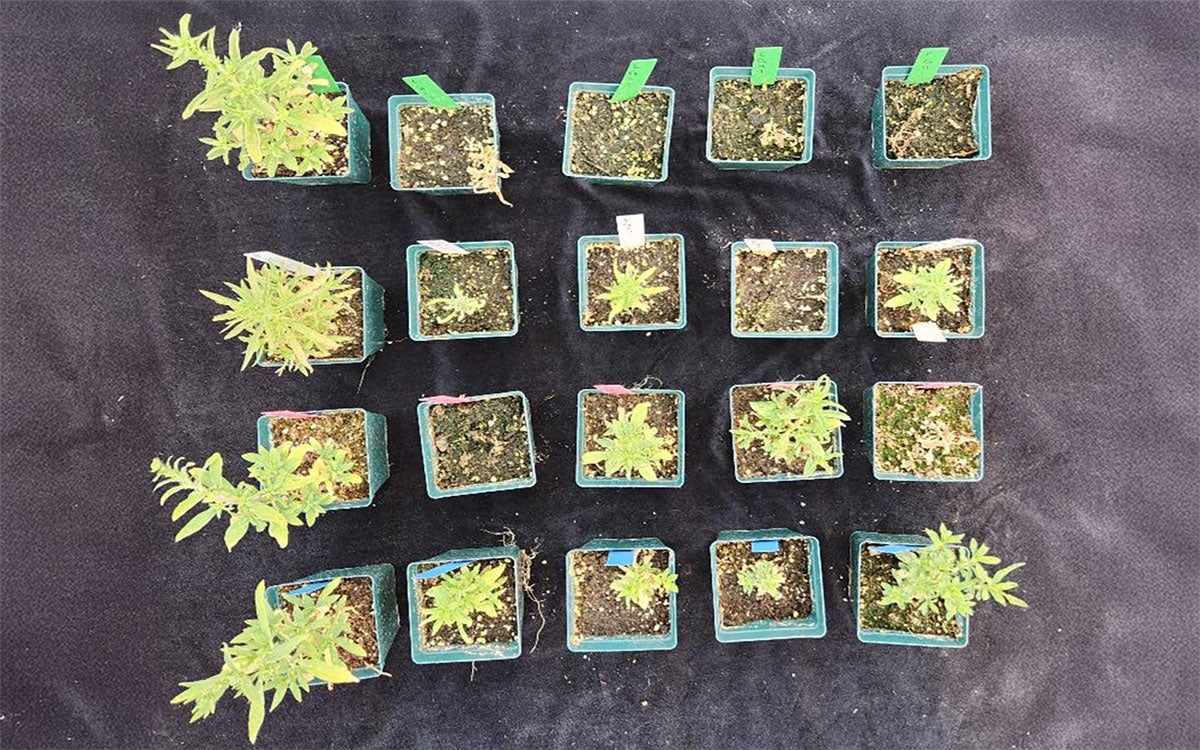
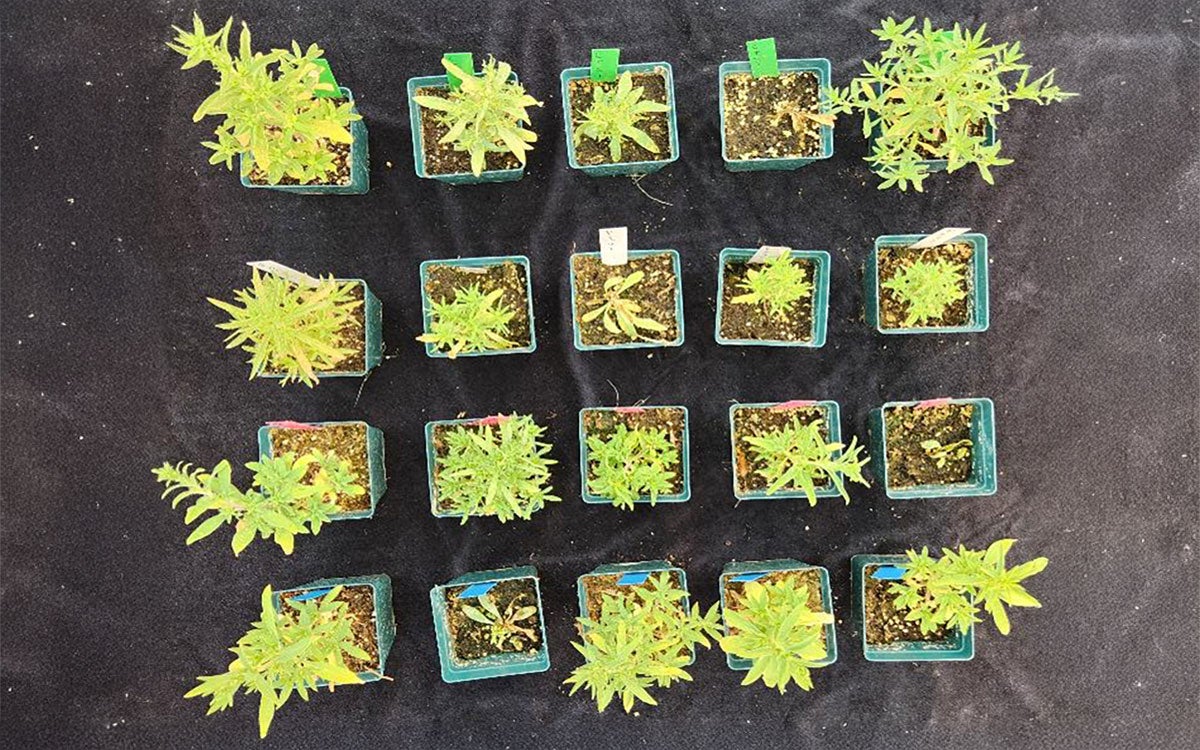
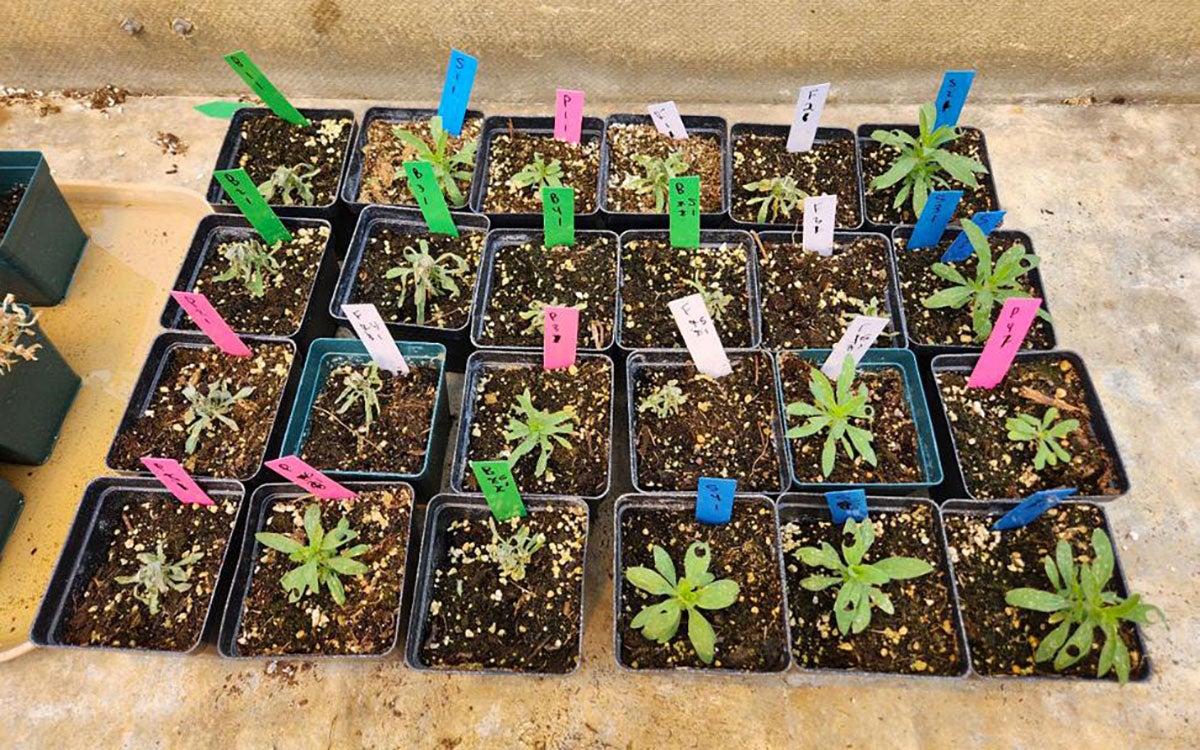
Some of these kochia populations may be three- to four-way herbicide-resistant, leaving very few effective herbicide options. Herbicides will likely remain an important tool for weed management, however, relying on single herbicides and application timings should be avoided. Herbicide tank mixtures and multiple application timings using mixtures is highly recommended. In addition, other non-herbicide tactics should be implemented to manage kochia and reduce selection pressure on herbicide-resistant weeds. Control failures with herbicides should be taken seriously and isolated areas of surviving plants should be eradicated to prevent seed production.
Reference
- Heap IM (2025) International herbicide-resistant weed database.
